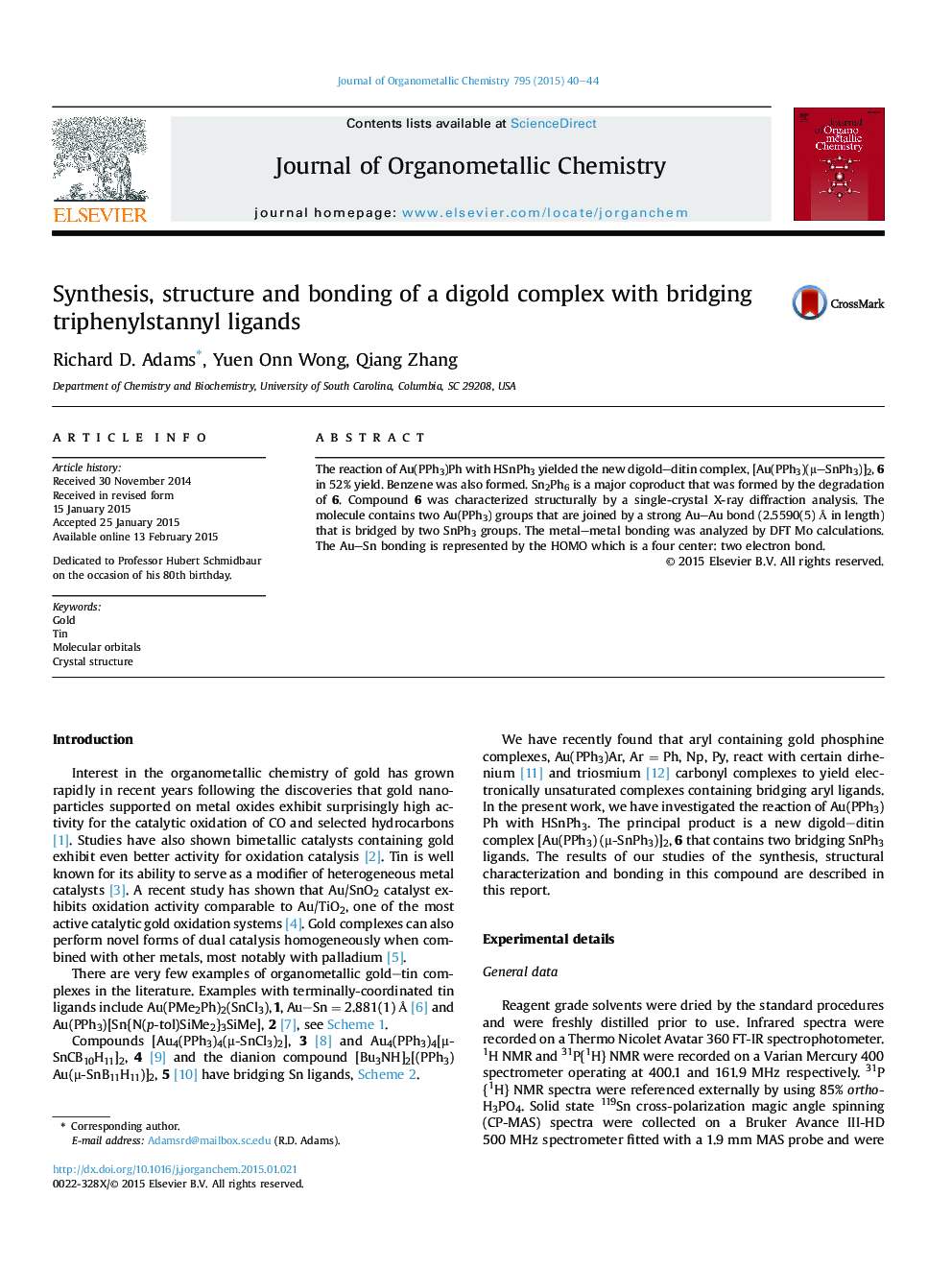| Article ID | Journal | Published Year | Pages | File Type |
|---|---|---|---|---|
| 1323379 | Journal of Organometallic Chemistry | 2015 | 5 Pages |
•The new digold–ditin complex [Au(PPh3) (μ–SnPh3)]2 contains two bridging SnPh3 groups.•DFT analysis shows the Au–Sn bonding involves delocalized four center: Two electron bond.•The two Au(PPh3) groups are joined by a strong Au–Au bond.
The reaction of Au(PPh3)Ph with HSnPh3 yielded the new digold–ditin complex, [Au(PPh3)(μ–SnPh3)]2, 6 in 52% yield. Benzene was also formed. Sn2Ph6 is a major coproduct that was formed by the degradation of 6. Compound 6 was characterized structurally by a single-crystal X-ray diffraction analysis. The molecule contains two Au(PPh3) groups that are joined by a strong Au–Au bond (2.5590(5) Å in length) that is bridged by two SnPh3 groups. The metal–metal bonding was analyzed by DFT Mo calculations. The Au–Sn bonding is represented by the HOMO which is a four center: two electron bond.
Graphical abstractThe new digold–ditin complex, [Au(PPh3) (μ–SnPh3)]2, 6 was synthesized and characterized by a single-crystal X-ray diffraction analysis. The molecule contains a strong Au–Au bond (2.5590(5) Å in length) that is bridged by two SnPh3 groups.Figure optionsDownload full-size imageDownload as PowerPoint slide
